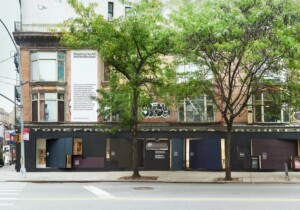On February 14, London’s Architectural Association announced its short list of three finalists to be considered for its director position. This short list, the AA claims, came from an initial response of 73 submitted applications that was then winnowed down to a “longlist of 26 candidates, of which 15 were selected for a first round of interviews.” In this first round, there were candidates from Australia, North and South America, Europe, Asia and Africa. In the second round, there were just eight candidates; four men and four women.
The final shortlist of three includes: Pippo Ciorra, Senior Curator of MAXXI Architettura in Rome, Eva Franch i Gilabert, Chief Curator and Executive Director of Storefront for Art and Architecture in New York, and Robert Mull, Head of Architecture and Design at the University of Brighton. All three also list themselves as architects and educators, but Ciorra and Eva Franch i Gilabert are also curators working in exhibition venues, and Mull calls himself an” urbanist and activist.”
Now the AA has released statements from the three candidates and their responses to a set of questions. Starting on February 19, the three will make formal presentations to the AA community, who will vote for the new director. We are taking this opportunity to highlight a few of the differences and, as it turns out, similarities between the candidates’ positions, with a link to the full statements. What makes the AA process so compelling is its openness and transparency. In this, it is unlike any other architecture institution in the world when it chooses a leader.
Robert Mull, the only Brit on the list, is positioning himself as the clear favorite for those who demand that architecture foreground itself firstly as ‘social’ practice. He wants architecture “to look outwards and to judge ourselves not by the internal logic of the international architectural community but by our impact on others and on society more generally.” Mull pointedly says, “I do not like needless hierarchy and I favor plain speaking and direct action over jargon and obscuration,” and is the only candidate who also asks that the AA become more engaged with London as its extended campus. He also talks about engaging with the current refugee crisis as a site for interventions.
The other two candidates, Ciorra and Franch i Gilabert, would of course deny they do not support social engagement, but they clearly emphasize the need to re-engage with the avant-garde legacy of the AA. They both, in nearly similar statements, believe that architecture arrived at its present “crises” as a result of “the acceleration of hyper-capitalism on one hand and the expansion of the so-called culture industry on the other” (Ciorra) and “over the last decade and as a result of new forms of communication, omnipresent market forces and increased global mobility, cultural and educational institutions around the globe have undergone a process of homogenization” (Franch i Gilabert). They both celebrate the AA’s history of experimentation, which they want to continue, and would also both ask outside professionals and academics to the AA to establish challenges for the institution.
All three thankfully recognize the need to continue supporting the AA’s publishing ventures and exhibition programs as well as upgraded PhD and research programs. It seems clear from these three statements that they each recognize the AA’s current economic distress, what that means for its future student enrollment, and the need to establish a more stable economic model and platform. But none of the three really have definitive ideas of what this new model would look like. Perhaps they will not know this until they are seated in the directors chair and facing this challenge head-on.











